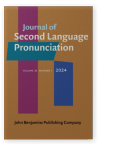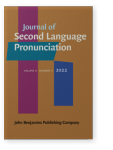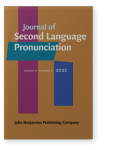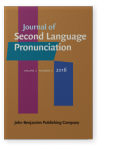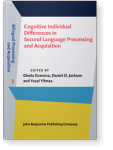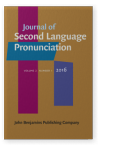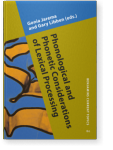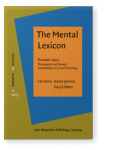Isabelle Darcy
List of John Benjamins publications for which Isabelle Darcy plays a role.
2024 Pedagogical decisions in the teaching of segmentals and suprasegmentals Journal of Second Language Pronunciation 10:1, pp. 110–125 | Article
This short article summarizes the pedagogical decisions behind the implementation of treatment in our 2022 study (Gordon & Darcy, 2022). In this study, we provided explicit pronunciation instruction to three groups of first-semester English-as-a-foreign-language (EFL) classes at a small… read more
2022 Comprehensibility improvements in integrated pronunciation instruction: A comparison of instructional methods and task effects Journal of Second Language Pronunciation 8:3, pp. 328–362 | Article
Integration of pronunciation into content courses is appealing because of its potential in helping learners apply their developing pronunciation skills in spontaneous speech. However, the effectiveness of pronunciation instruction (PI) when it is integrated still needs to be demonstrated. This… read more
2022 Teaching segmentals and suprasegmentals: Effects of explicit pronunciation instruction on comprehensibility, fluency, and accentedness Journal of Second Language Pronunciation 8:2, pp. 168–195 | Article
This study reports the results of a pronunciation intervention to enhance the comprehensibility, fluency, and accentedness of three groups of second language (L2) learners in an English-as-a-foreign-language (EFL) context. Three groups of first-semester EFL students at a small university in… read more
2016 Executive control and phonological processing in language acquisition: The role of early bilingual experience in learning an additional language Cognitive Individual Differences in Second Language Processing and Acquisition, Granena, Gisela, Daniel O. Jackson and Yucel Yilmaz (eds.), pp. 249–277 | Chapter
This chapter discusses the relationship between cognitive control and phonological processing in a second language (L2). Cognitive control is globally referred to as executive functions, mainly consisting of attention control, working memory and inhibitory control. Our research examines how… read more
2016 The development of comprehensible speech in L2 learners: A classroom study on the effects of short-term pronunciation instruction Journal of Second Language Pronunciation 2:1, pp. 56–92 | Article
Developing comprehensible speech is an important goal for L2 learners. At present, there is clear evidence indicating that pronunciation instruction can help develop comprehensibility compared to no instruction at all (see Thomson & Derwing, 2015, for a review). However, it is unclear whether rapid… read more
2015 Asymmetric lexical access and fuzzy lexical representations in second language learners Phonological and Phonetic Considerations of Lexical Processing, Jarema, Gonia and Gary Libben (eds.), pp. 119–168 | Article
For L2-learners, confusable phonemic categories lead to ambiguous lexical representations. Yet, learners can establish separate lexical representations for confusable categories, as shown by asymmetric patterns of lexical access, but the source of this asymmetry is not clear (Cutler et al., 2006).… read more
2013 Asymmetric lexical access and fuzzy lexical representations in second language learners Phonological and Phonetic considerations of Lexical Processing, pp. 372–420 | Article
For L2-learners, confusable phonemic categories lead to ambiguous lexical representations. Yet, learners can establish separate lexical representations for confusable categories, as shown by asymmetric patterns of lexical access, but the source of this asymmetry is not clear (Cutler et al., 2006).… read more
